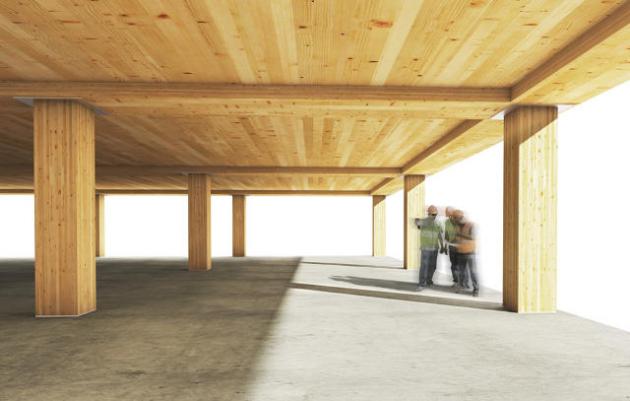Engineered wood market to reach $41.3 billion globally by 2022 [Feb 10, 2017] |
|||
 A new report from market research firm Allied Market Research (AMR) projects that the global engineered wood market is estimated to reach $41.273 billion by 2022, growing at a compound annual growth rate (CAGR) of 24.8 percent from 2016 - 2022. North America and Europe, being the developed markets, account for nearly 70 percent of global engineered wood production, while still maintaining high CAGRs.
Engineered wood demand is
expected to remain high during the
forecast period as it is an alternative
to concrete and hardwood. Engineered
wood products are widely used by
architects, builders, code officials,
and building designers aware of
energy-efficient framing practices that
conserve energy, speed-up construction,
cut labor cost, and reduce waste. "The rising popularity of engineered wood over hardwood is attributable to its cost-effectiveness and eco-friendly aspect,” says AMR research analyst Yogiata Sharma. “Also, stringent regulations with regards CO2 emission and rapid deforestation are factors likely to propel the adoption of engineered wood. Despite the reservations, surrounding its usage due to safety concerns, composite wood has proved to be a huge commercial success.”
Other developing and emerging
regions, such as Asia-Pacific, Latin
America, and Africa, exploit their vast
forests for timber and raw materials for
various engineered wood products. In
2015-2016, countries in Asia-Pacific
such as Japan, Indonesia, and India led
the engineered wood market, as they are
the main exporters of raw materials to
North American and European countries.
India is one of the emerging markets in
Asia-Pacific engineered wood industry,
currently accounting for 10 percent of
the Asia-Pacific engineered wood market
share. It is estimated to register the
highest CAGR of around 25 percent from
2016 - 2022. Brazil and Chile show significant growth in the engineered wood market, owing to the high production of raw materials. These regions are expected to grow with double-digit CAGRs and witness entry of a number of market players. Engineered wood market is segmented based on the type of product, wherein plywood and glulam collectively account for nearly 54 percent of the global market, and with cross-laminated timber expected to grow with the highest CAGR of nearly 30 percent during the forecast period. The report says the non-residential construction would lead the market, owing to the continuously increasing construction of multistory building and bridges, globally.
· Increasing disposable income among middle and upper economic segments and increase in technical knowledge of machinery required in engineered wood product formation are the main reasons for their growth. · CLT segment possesses high market potential owing to its usage in building of mega structures and growth in nonresidential market segment. · Plywood and oriented strand boards (OSB) dominate the North American engineered wood in terms of volume market share, while I-beams and glulam lead the European market. · Overall, the non-residential segment possesses higher market share in the overall Engineered wood market Key players profiled in this report
are Celulosa Arauco Y Constitución S.A.,
Weyerhaeuser Company, Boise Cascade
Company, Roseburg Forest Product
Company, Shenzhen Risewell Industry Co.,
Ltd., Louisiana Pacific Corporation,
Lowes Companies, Inc., Georgia Pacific
Wood Products, LLC, Universal Forests
Products, Inc., 84 Lumber Company, Huber
Engineered Wood LLC, and Patrick
industries, Inc. Source: Woodworking Network |
|||
